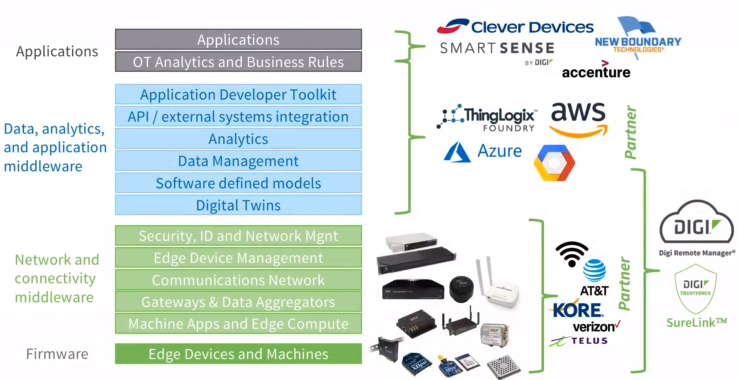对于初创公司和企业来说,数据堆栈的现代化同样至关重要。数据分析驱动着初创企业赖以生存的基础业务决策,最大限度地降低失败风险,帮助企业实现可持续的业务增长。从小规模的客户答谢活动到最大规模的
网络营销平台一切都建立在强大的数据分析基础之上。
对于大型企业和商家来说,数据堆栈的现代化对于跟上客户的步伐至关重要,因为客户期望获得更加个性化和高效的客户体验。
本文将探讨如何以及为什么要对数据堆栈进行现代化改造,以获得商业智能(BI)洞察力。但首先,让我们根据公司的成熟度、预算、现有资源和目标来探讨数据堆栈的不同阶段。
数据堆栈的 4 个阶段
为清晰起见,数据堆栈的成熟度可浓缩为四个关键阶段:

启动堆栈
起步栈是初创企业或小型企业在数据成熟之初使用的一种简单数据架构。它侧重于从主要数据源(如网站、社交媒体或人工智能应用程序的开发过程)收集数据,并将数据传输到下游登陆点,如数据分析平台。
启动器堆栈有助于更好地进行报告。例如,营销人员可以将网站数据发送到 Google Analytics,以便直观地了解SaaS SEO 战略或移动优化实施的结果。内容经理可以整理打开率和点击率,作为电子邮件营销策略的一部分,以提高客户参与度。经理可以收集内部关键绩效指标,以报告员工绩效。
启动栈使预算有限、数据量小且不复杂的初创企业能够统一多个系统,降低点对点集成的复杂性。启动栈是数据之旅最关键的部分,因为它为未来数据的成熟奠定了基础。
然而,随着数据量的增长,启动器堆栈会带来各种挑战。这些挑战包括网站和应用程序性能受损、集成复杂性增加,以及随着工具和技术的扩展而无法支持双向数据流。
增长堆栈
增长堆栈阶段解决了启动堆栈中一些最紧迫的挑战,一旦数据量膨胀,这些挑战就不可避免。
增长堆栈的主要目标是在数据仓库内集中管理数据。数据仓库是结构化和半结构化数据(主要是历史数据)的数字存储库。它可以从各种不同的系统中提取数据,并创建双向数据流,是消除数据孤岛和创建单一真相源的重要基石。
它类似于 "单一窗格玻璃"的概念,将来自大量独立设备的数据整合到一个解决方案中。
以仓库为中心的结构开始促进数据挖掘,并允许公司建立客户旅程和客户档案。随着数据可访问性和统一性的提高,用户可以更成功地进行查询和分析。
在成长堆栈阶段,您需要一个数据分析师团队来进行数据清理、解释和可视化。

机器学习堆栈
一旦数据仓库被集中到数据架构中,就该进入数据湖的下一阶段了。
数据湖能够存储大量结构化、半结构化和非结构化数据。未经转换的原始数据具有很强的延展性,是机器学习的最佳选择,有利于进行不同类型的数据分析,其中最突出的是预测分析。
预测分析利用数据、建模和机器学习技术来预测与用户行为有关(但不限于)的潜在结果。
假设您想防止客户流失,将其作为购买后客户保留战略的一部分。预测分析将使用历史客户数据来确定客户流失通常发生在客户生命周期的哪个阶段。由此,您可以识别有流失风险的客户,并在最佳时机锁定他们。
在这一阶段,机器学习和数据工程资源得到了大量投入和优化。数据挖掘和分析正被用于为未来的业务成果提供信息并推动业务转型,尽管复杂程度各不相同。
实时堆栈
在进行竞争产品分析时,您可能会发现大多数企业都能轻松地成熟(或以成熟为目标)到 ML 堆栈阶段。但是,拥有数百万客户的全球性企业可能需要将输出从仓库直接发回应用程序。
为什么?让他们能够实时提供个性化的客户体验。
利用先进的机器学习技术和在线内存数据存储,实时堆栈可以根据离线和在线预测修改和定制用户的网站或应用程序体验。
数据堆栈现代化的好处

如上所述,数据堆栈现代化最有价值的好处之一就是提高了数据分析的生产力和准确性。根据微策略公司(MicroStrategy)最近的一项研究,使用分析技术带来了大量好处,包括提高生产率、加快决策速度和改善财务业绩。通过简化客户旅程,可以加快获得付款的过程,使之变得简单。
使团队对数据的理解标准化
现代化的数据堆栈总是集中统一的。它们使用数据仓库、数据湖以及其他工具和集成来消除数据孤岛,创建单一的真相源。
通过确保不同部门和远程工作团队都能访问一致的数据,您就能让团队高效协作并做出统一的业务决策。
无需很多资源即可完成
数据堆栈现代化并不需要投资大量昂贵、复杂的资源。事实上,数据仓库和数据湖是促进现代化的两大主要资源,此外还有商业智能工具和与之相匹配的人才。
降低成本
云数据仓库和数据湖是低成本的存储解决方案,其可扩展性和灵活性可显著降低成本。除此之外,现代化还能为您的数据堆栈提供新的功能。有了改进内部工作流程和数据质量的自由,您就可以加快分析的盈利速度。
为更快地执行项目开辟道路
项目完成得越快,就能获得越多有价值的见解和创新。现代化的数据堆栈可提高数据可见性并推动组织效率,两者相辅相成,引领您的团队实现更好的项目管理和快速的项目执行。

建立现代数据堆栈的 5 个步骤
从数据堆栈现代化战略中获得的竞争优势是巨大的。当然,现代化并非一蹴而就。以下是您在建立现代化数据堆栈时应采取的五个基本步骤。
1.确定数据来源
您的数据来自哪里,哪些来源/数据类型与您的业务目标相关?
确定正确的数据源是建立数据可见性和可靠性基础的关键一步。如果您正在使用Java Web scraping 工具,请确保您使用的是最好的工具。了解所有数据的来源,可以防止隐形数据损害洞察力的准确性。
此外,如果有您需要但尚未获得的数据,请确保您在进入下一阶段之前投资于适当的电子商务工具和业务范围。
2.选择适合企业的数据仓库
数据仓库的规格、功能、优势和优先级各不相同。在选择数据仓库提供商之前,请先进行研究。最流行的解决方案未必最适合您独特的业务需求。
选择数据仓库时需要考虑的一些事项包括
- 数据量和类型
- 易于扩展
- 安全
- 时间价值
- 初始设置成本和定价结构
- 持续维护成本和资源获取
- 性能
- 支持
还值得考虑的是,数据湖(甚至像数据湖屋这样的下一代技术)是否更适合您的企业。
数据湖对于收集大量非结构化数据的公司来说至关重要。数据湖还能实现更严格的数据管理和质量,使企业能够管理和可靠地传达从这些关键审计事项示例到 GDPR 和 CCPA 法规的所有信息。
3.选择要使用的数据摄取工具
要想快速从提取的数据中获取价值,您的 ETL(提取、转换、加载)流程必须高效。数据导入工具负责处理这一流程,从数据源中收集数据并将其导入到存储解决方案中。
4.数据建模
数据建模可能是现代数据战略中最复杂的任务之一。它包括分析数据以识别和定义关系,利用这些洞察力创建简化的数据模型,作为数据流的可视化表示。
要成功执行数据建模,您很可能需要具备数据建模知识的数据或分析工程师的帮助。
5.数据激活或数据操作化
数据激活(又称数据优化)是指如何在不需要资源密集型流程的情况下为最终用户提供可操作的数据。
您可以将数据激活视为 "逆向 ETL "流程。这是指在数据仓库中提取和转换数据,并加载到第三方业务应用程序(加速机构 SaaS 工具、客户关系管理等)上。
数据激活通过向最终用户提供自助服务,使您的数据堆栈现代化。非技术团队不再依赖 IT 和科学团队获取数据见解,而是可以轻松访问和利用可操作数据,独立推动数据驱动型计划。
 在 Digi,Digi Remote Manager®软件即服务解决方案可管理整个IoT 协议栈。
在 Digi,Digi Remote Manager®软件即服务解决方案可管理整个IoT 协议栈。
最终想法
数据堆栈现代化可以集中和整合数据,提高可见性和可访问性。但是,仅仅养成囤积数据的习惯是不够的,重要的是如何使用这些数据。
通过对数据堆栈进行投资,您可以将更少的时间用于数据管道工程,将更多的时间用于数据分析。数据分析越深入,您就越有机会发现强大的商业智能洞察力。这也让您有更多时间专注于其他增长战略,比如在内容营销中利用人工智能。
因此,无论您是处于起步阶段还是机器学习阶段都没有关系。只要您采取措施,不断对数据堆栈进行现代化改造,您就走在了通往成功的正确道路上。
下一步工作
关于作者
 尼克-布朗是 加速机构这是一家位于布里斯托尔的搜索引擎优化公司。
尼克-布朗是 加速机构这是一家位于布里斯托尔的搜索引擎优化公司。
他拥有超过 12 年的数字营销经验,曾为大型公司提供搜索引擎优化、CRO 和内容营销方面的建议。他曾为HubSpot 和BambooHR 等网站撰稿。